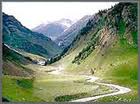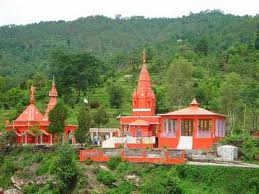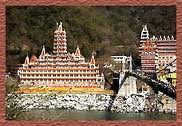Jim Corbett National Park lies in the Nainital, Pauri Garwhal and Bijnore Districts of Uttaranchal. The whole area of the reserve is mountainous and falls in the Shivalik and Outer Himalaya geological region. Corbett National park is known for its varied wildlife, and as the site for the launching of Project Tiger. Corbett National Park was one of the nine tiger reserves created at the launch of the Project Tiger in 1973.
The main wildlife animals found in the Corbett National Park include the tiger, elephant, chital, sambar, nilgai, gharial, King Cobra, muntjac, wild boar, hedgehog, common musk shrew, flying fox, Indian Pangolin, and nearly 600 species of birds and also a variety of facilities are available to house tourists within and outside the park.
It is a heaven for the adventure aficionado and wildlife escapade lovers. Dense moist deciduous forest mainly consists of peepal, sal, haldu, rohini (elephant feed) and mango trees, these trees cover almost 71 per cent of the park. The 10 per cent of the region consists of grasslands. The rare Royal Bengal tiger of India resides here. The sanctuary was the first to come under Project Tiger initiative in 1973.
It is the one of the largest park in Asia. The Main River is Kosi, Ramganga and Sonanandi. These rivers are originated from himalays but Sonanandi is a branch of Ramganga.
There are three types of safari to visit the jungle
* Elephant Safari
* Jeep Safari and
* Canter Safari.
The different habitat types of Corbett i.e. mountains, sal forests, chaurs, khair-sissoo forests, and rivers have their distinct assemblage of plants. More than 600 species of trees, shrubs, herbs, bamboos, grasses, climbers and ferns have been identified in the Park.
Trees in Jim Corbett National ParkThe most visible trees found in Corbett are sal, khair and sissoo. Chir pine (Pinus roxburghi) is the only conifer of the Park. Palms include Khajur or Date-palm (Phoenix sp.), Wallachia densiflora a rare palm is found in Corbett near Sultan. Kanju (Holoptelia integrifolia), Jamun (Syzygium cumini) and Aamla (Emblica officinalis) are found in moist areas. Other major tree species are Bel (Aegle marmalos), Kusum (Schleichera oleosa), Mahua (Madhuca indica) and Bakli (Anogeissus latifolia).
Flowering trees lend colour to the forests in Corbett. The main ones are Kachnaar (Bauhinia variegata), Semal (Bombax ceiba), Dhak or Flame-of-the-forest (Butea monospermous), Madaar or Indian Coral (Erythrinia indica) and Amaltas (Cassia fistula).
Shrubs, Bamboo, Herbs, Grasses, Woody climbers, Epiphytes and orchids, Wetland vegetation, Non-flowering plants, Liverworts and mosses are found on moist trunks.
Fauna in Jim Corbett National ParkFauna mainly include Tiger, The Asian Elephant, Deer, Sambar (Cervus unicolor), Kakar or Barking Deer. Other mammals are The Leopard (Panthera pardus), Hanuman or Common Langur (Semnopithecus entellus) Himalayan Goral or Ghural (Nemorhaedus goral) Wild boar (Sus scrofa) Asiatic Jackal (Canis aureus) etc. Gharial and Mugger, Mahseer and other Fishes, Herpetofauna also found in the park.
Corbett is one of the few places in India where three species of otter are found existing together. The species of otters occurring in Corbett Park are Eurasian or Common otter (Lutra lutra monticola), Smooth-coated otter (Lutra perspicillata) and Small-clawed otter (Aonyx cinerea).











Wild Life Parks